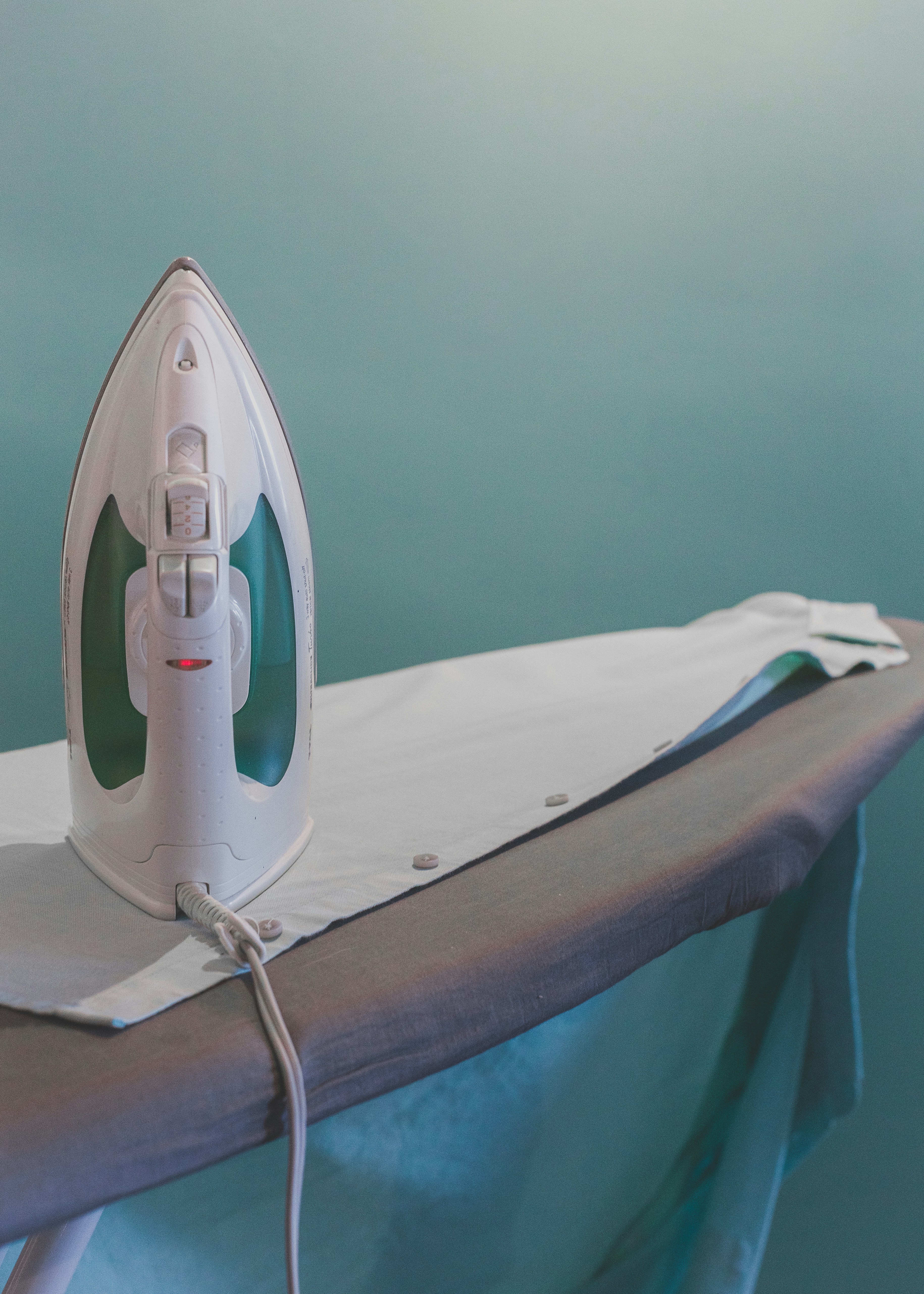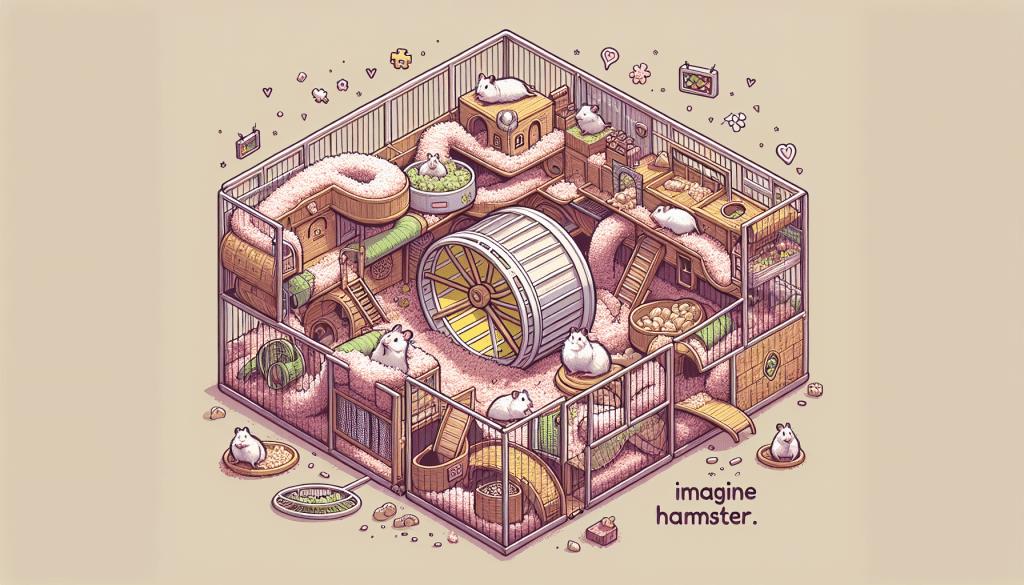So you’ve recently become a proud owner of a hamster, but now you’re faced with the daunting task of keeping their cage clean. No worries, we’ve got you covered! In this comprehensive guide, we’ll take you through all the necessary steps to ensure your furry friend’s living space is squeaky clean and comfortable. From choosing the right cleaning supplies to creating a cleaning routine that works for both you and your hamster, you’ll have all the information you need to make this chore a breeze. Get ready to become a pro at keeping your hamster’s cage spotless and odor-free!

Understanding the Importance of a Clean Cage
Keeping your hamster’s cage clean is crucial for their overall health and wellbeing. An unclean cage can pose various risks and lead to numerous health issues for your furry friend. Additionally, a dirty cage can result in unpleasant odors and an unsightly living environment.
Risks of an unclean cage
An unclean hamster cage can harbor harmful bacteria, fungi, and parasites that can cause infections and diseases. Your hamster may come into contact with these germs through their bedding, toys, food, and water. Respiratory problems, skin irritations, and digestive issues are just a few examples of the health problems that can arise from a dirty cage.
Furthermore, the waste buildup in an unclean cage can attract flies, mites, and other pests, creating an unhygienic environment not only for your pet but also for you and your family. It is essential to maintain a clean cage to prevent the spread of diseases and ensure the well-being of your furry friend.
Benefits of a regular cleaning schedule
Establishing a regular cleaning schedule for your hamster’s cage offers many benefits. Firstly, it helps keep your hamster healthy by preventing the buildup of germs and bacteria. A clean cage also minimizes the risk of odors, allowing you to enjoy a fresh-smelling living space for both you and your hamster.
Moreover, maintaining a clean cage enables you to monitor your hamster’s health more closely. You can easily spot any changes in their behavior, appetite, or physical appearance when their living environment is clean and organized. Regular cleaning also prevents potential respiratory issues that may arise from inhaling dusty or soiled bedding.
By providing a clean and comfortable living space for your hamster, you are ensuring their happiness and improving their quality of life. Now that you understand the importance of a clean cage, let’s delve into the details of how to properly clean your hamster’s habitat.
Knowing the Frequency of Cleaning
Different aspects of cleaning a hamster’s cage require varying frequencies. Some tasks need to be performed daily, while others can be done on a weekly or monthly basis. Let’s take a closer look at the recommended cleaning schedule for maintaining a hygienic living environment for your furry friend.
Daily check-ups
Every day, it is essential to quickly inspect your hamster’s cage for any visible mess, feces, or uneaten food. Remove any soiled or uneaten materials promptly to prevent the buildup of bacteria and odors. This daily routine ensures a clean and healthy living space for your hamster, reducing the risk of infections and spreading diseases.
Weekly cleaning
On a weekly basis, you should perform a more thorough cleaning of your hamster’s cage. This involves removing the old bedding, cleaning the cage accessories, and sanitizing the cage itself. By adhering to a weekly cleaning routine, you maintain a clean and fresh environment, promoting your hamster’s overall well-being.
Monthly deep cleaning
Once a month, it’s time to dive deeper into cleaning your hamster’s cage. This involves disassembling the cage if necessary, thoroughly scrubbing and disinfecting all parts, and examining the condition of toys and accessories. The monthly deep cleaning ensures that no grime or germs are left behind, maintaining a healthy and hygienic living space for your hamster.

Preparing for the Cleaning Process
Before you begin cleaning your hamster’s cage, it is crucial to make the necessary preparations. This will ensure a smooth and efficient cleaning process. Here are a few steps to follow before getting started:
Creating a temporary housing
While cleaning your hamster’s cage, you need to provide them with a temporary housing. A spare cage or a secure hamster ball can serve as a safe and comfortable space for your hamster during the cleaning process. Ensure that the temporary housing provides appropriate ventilation and security to prevent any escapes or accidents.
Gathering necessary cleaning supplies
To clean your hamster’s cage effectively, gather all the necessary cleaning supplies beforehand. This includes mild soap or pet-safe cleaning solutions, a sponge or bristle brush for scrubbing, a bucket or basin for water, and clean towels for drying. Having all the supplies ready will save you time and prevent interruptions during the cleaning procedure.
Wearing protective gear
When handling cleaning solutions or potentially dirty materials, it is advisable to wear protective gear. Gloves and a face mask can protect you from any potential allergens or pathogens. Additionally, wearing an apron or old clothing can prevent stains or dirt from transferring onto your clothes. Stay safe and hygienic throughout the cleaning process by taking these simple precautions.
Executing the Emptying Process
Before you can start cleaning the cage, you need to empty it of all its contents, including your hamster. Here’s how to safely and efficiently carry out the emptying process:
Safely moving your hamster
When it’s time to clean the cage, carefully handle your hamster and transfer them to their temporary housing. Never forcefully remove your hamster from their cage. Instead, coax them into a secure carrier or gently scoop them up using your hands. Make sure the temporary housing is securely closed to prevent any escapes.
Removing the bedding and toys
Once your hamster is safely relocated, remove all the bedding and toys from the cage. Dispose of the soiled bedding in a sealed bag to prevent any unwanted odors or pests. Scrutinize the toys for any chewed or damaged parts and set them aside for cleaning or replacement. Emptying the cage completely allows for a thorough cleaning process.
Disassembling the cage when necessary
Depending on the type of cage you have, you may need to disassemble it to access all the nooks and crannies for effective cleaning. Follow the instructions provided by the manufacturer or refer to your cage’s manual for disassembly guidelines. Take note of how the cage is assembled to ensure correct reassembly later.

Implementing Safe Cleaning Methods
When cleaning your hamster’s cage, it is crucial to prioritize their safety and well-being. By avoiding harsh chemicals and using safe cleaning solutions, you can ensure a healthy and clean environment for your furry friend.
Avoiding harsh chemicals
Harsh chemicals such as bleach or ammonia-based cleaners can be extremely harmful to your hamster’s respiratory system and overall health. These substances emit strong fumes that can be detrimental to your pet’s well-being. It is best to steer clear of such chemicals and opt for pet-safe alternatives instead.
Using safe cleaning solutions
Choose pet-safe cleaning solutions specifically formulated for hamster cages or small animal habitats. These solutions are designed to effectively eliminate germs and odors without posing any health risks to your hamster. Read the product labels carefully to ensure they are safe for use around your tiny companion.
Rinsing off cleaning solutions properly
After cleaning the cage using any cleaning solution, make sure to rinse it thoroughly to remove any residues. Even pet-safe solutions can leave behind a film or residue that may be harmful if ingested or inhaled by your hamster. Rinse with clean water multiple times to ensure all cleaning product residues have been eliminated.
Scrubbing and Disinfecting the Cage
Now that the cage is emptied and the cleaning supplies are ready, it’s time to start scrubbing and disinfecting the cage. This step is crucial to remove any leftover dirt, germs, and odors.
Scrubbing off any residue
Using a sponge or bristle brush, scrub all surfaces of the cage to remove any residue and stubborn dirt. Pay close attention to the corners, bars, and crevices where debris often accumulates. Remember to be gentle while scrubbing to avoid damaging the cage. Thoroughly rinse the cage after scrubbing to remove all loosened dirt.
Sanitizing the cage
To ensure that your hamster’s living environment is germ-free, it is important to sanitize the cage. Pet-safe disinfectants, specifically designed for small animal enclosures, are ideal for this purpose. Follow the instructions provided with the disinfectant and apply it evenly throughout the cage. Leave it on for the recommended duration before rinsing.
Drying the cage thoroughly
After rinsing off the disinfectant, allow the cage to air dry thoroughly. It is important to ensure that all surfaces are completely dry before returning your hamster and adding fresh bedding. Moisture can lead to the growth of mold or mildew, which can pose serious health risks to your hamster. Patience is key during this stage of the cleaning process.

Cleaning Hamster Accessories
In addition to cleaning the cage itself, you should also attend to your hamster’s accessories. Toys, food containers, and water dispensers all play a significant role in your pet’s daily life and should be cleaned regularly.
Sanitizing the toys
Hamsters love to chew and play with their toys, so it is crucial to keep them clean and germ-free. Depending on the material, you can either wipe the toys with a pet-safe disinfecting wipe or wash them with mild soap and water. Rinse thoroughly and allow the toys to air dry before placing them back in the cage.
Cleaning the food and water containers
Food and water containers should be cleaned on a regular basis to prevent the growth of bacteria. Wash these containers with mild soap and water, ensuring all residue or food particles are removed. Rinse them thoroughly and dry them completely before refilling with fresh food and water.
Addressing chewed or damaged items
Inspect all your hamster’s accessories for any signs of damage, such as chewed edges or loose parts. Remove or repair any items that may pose a risk to your hamster’s safety. If your hamster has repeatedly damaged or chewed certain items, consider replacing them with safer alternatives.
Reassembling and Restocking the Cage
With the cleaning process complete, it’s time to reassemble and restock your hamster’s cage. Follow these steps to ensure a comfortable and inviting home for your furry friend:
Setting up the clean cage
Begin by reassembling the cage, following the manufacturer’s instructions or your own notes from earlier. Ensure that the cage is securely put together to prevent any safety hazards. Double-check all the latches, doors, or clips to avoid any escapes or accidents.
Adding fresh bedding
Choose a high-quality bedding material suitable for your hamster’s species and needs. Add a sufficient amount of bedding to ensure your hamster has a cozy and comfortable sleeping area. Spread it evenly throughout the cage, paying particular attention to areas your hamster prefers for nesting.
Placing the accessories back
Carefully place the cleaned and dry accessories back into the cage. Arrange them in a way that provides your hamster with entertainment and stimulation. Use your knowledge of your hamster’s preferences and behavior to create an engaging and inviting environment.

Returning Your Hamster to Its Clean Home
Now that the cage is clean, it’s time to safely return your hamster to their refreshed habitat. Follow these steps to ensure a smooth transition back into their clean home:
Ensuring the cage is safe and dry
Before returning your hamster, double-check that the cage is completely dry and free from any cleaning product residues. Also, make sure that all doors, latches, and feeding areas are secure to prevent any accidents or escapes. A safe and dry habitat is essential for your hamster’s well-being
Helping the hamster adapt back into the cage
When returning your hamster to their clean cage, observe their behavior closely. Some hamsters may be a bit apprehensive or curious about the changes you have made. Allow them some time to explore their familiar surroundings and adjust to the clean environment. Offering a treat or additional enrichment can help make the transition smoother.
Maintaining a Clean Hamster Cage
Once you have gone through the process of cleaning and setting up your hamster’s cage, it is important to establish a routine to maintain its cleanliness and your hamster’s health. Here are some key aspects to consider:
Quarantining a sick hamster
If your hamster becomes ill, it is vital to isolate them in a separate, sterile environment. This prevents the spread of illness to other hamsters and allows for easier cleaning and disinfection. Consult a veterinarian for proper treatment and care.
Monitoring your hamster’s behavior
Regularly observe your hamster’s behavior, appetite, and overall demeanor. Changes in behavior, such as decreased activity or appetite, can indicate underlying health issues. Early detection and prompt veterinary care are key to maintaining your hamster’s health.
Addressing cleaning issues regularly
Take note of any recurring cleaning issues, such as persistent odors or difficulty in removing stains. Address these issues promptly by adjusting your cleaning routine or seeking advice from experienced hamster owners or veterinarians. Proper cleaning techniques and product selection can help alleviate cleaning challenges.
Checking hamster’s health regularly
Schedule regular check-ups with a knowledgeable veterinarian to ensure your hamster’s overall health. Regular veterinary visits allow for early detection of potential health problems and provide an opportunity to seek advice specific to your hamster’s needs.
Maintaining a clean hamster cage is essential for your pet’s health and happiness. By understanding the importance of cleanliness, knowing how frequently to clean, preparing properly, using safe cleaning methods, scrubbing and disinfecting the cage, cleaning accessories, and maintaining regular check-ups, you can provide a safe and hygienic living environment for your beloved hamster.


